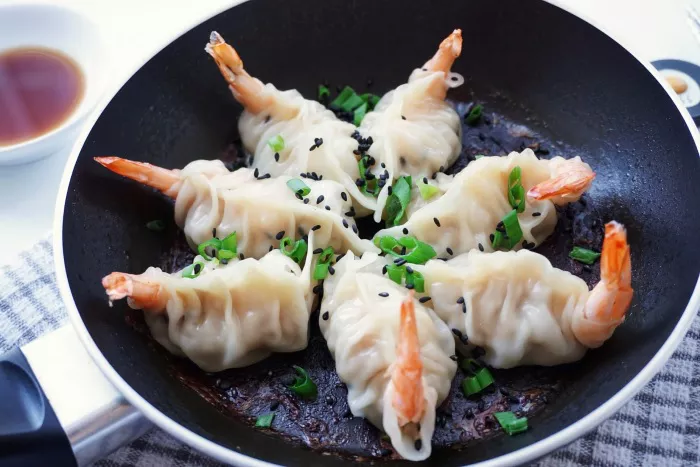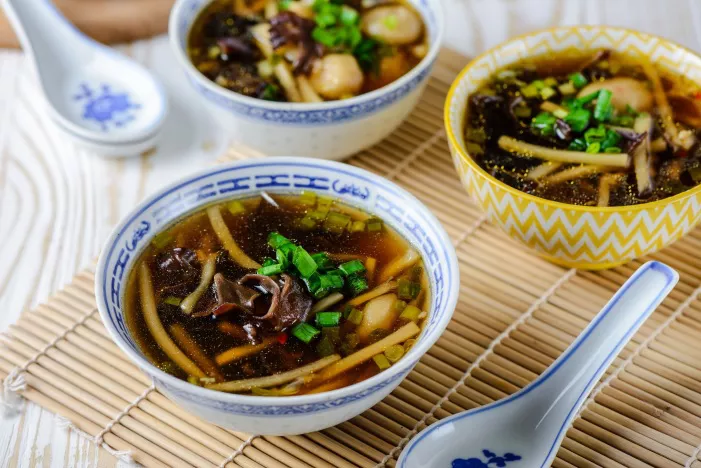Shrimp dumplings, also known as “Har Gow” in Cantonese cuisine, are a culinary masterpiece that exemplifies the elegance and artistry of dim sum. These delectable morsels are prized for their translucent, delicate wrappers and succulent shrimp fillings. In this comprehensive guide, we will embark on a journey to master the art of making shrimp dumplings, from selecting the finest ingredients to mastering the techniques that result in a delightful, tender, and flavorful dish.
The Essence of Shrimp Dumplings
Shrimp dumplings are not just a dish; they are a reflection of the delicate balance between art and flavor. Their essence lies in the simplicity of the ingredients and the precision of the technique. A good shrimp dumpling is a testament to the cook’s skill and attention to detail.
Choosing the Perfect Shrimp
The foundation of any great shrimp dumpling is the shrimp itself. To create the best filling, choose fresh, high-quality shrimp. Look for large, firm shrimp with a slightly sweet aroma. Freshness is key, as it significantly impacts the flavor and texture of the dumplings. If you can, opt for shrimp that have been peeled and deveined, which will save you time in the preparation process.
Preparing the Shrimp
Once you have selected the perfect shrimp, you’ll need to prepare them for the filling. The process involves deveining, cleaning, and chopping the shrimp. To devein, make a shallow incision along the back of each shrimp and remove the dark vein. Rinse the shrimp under cold water and pat them dry with paper towels. Then, chop the shrimp finely, aiming for a slightly chunky texture. This will create a pleasing balance of texture in the dumpling filling.
The Art of Shrimp Dumpling Filling
Shrimp dumpling filling is all about creating a harmonious blend of flavors and textures. In addition to the chopped shrimp, you can enhance the filling with a few key ingredients:
Water Chestnuts: Finely chop these for a mild crunch that adds an interesting texture to the filling.
Bamboo Shoots: Minced bamboo shoots add a subtle earthy flavor and a pleasant bite.
Green Onions: The white parts, finely minced, provide a mild onion flavor and a touch of color.
Sesame Oil: A few drops of sesame oil contribute a nutty aroma and depth to the filling.
Soy Sauce: Enhances the savory character of the filling and provides a gentle saltiness.
The key to a successful shrimp dumpling filling is to ensure that all ingredients are finely minced and evenly distributed for a harmonious blend of flavors and textures.
Creating the Perfect Dumpling Wrappers
Dumpling wrappers for shrimp dumplings are traditionally made from a mixture of wheat flour and hot water. You can purchase pre-made dumpling wrappers, but making your own at home is both rewarding and authentic. To create the wrappers:
Combine all-purpose flour with hot (not boiling) water, stirring until the mixture forms a shaggy dough.
Knead the dough on a floured surface until it becomes smooth and elastic.
Roll the dough into a log, then cut it into small portions, rolling each into a ball.
Use a rolling pin to flatten each ball into a thin, round wrapper.
The wrappers should be thin but strong enough to encase the shrimp filling without tearing.
The Folding Technique: A Delicate Touch
The art of making shrimp dumplings lies in the folding technique. The traditional folding style for Har Gow is as follows:
Place a small amount of shrimp filling in the center of the dumpling wrapper.
Fold the wrapper in half to create a half-moon shape, pressing the edges to seal.
Create pleats along the sealed edge, starting from one end and working your way to the other. This pleated edge should face outward when steaming.
The key is to ensure that the dumplings are well-sealed to prevent any filling from leaking during the steaming process.
The Steaming Setup
To successfully steam shrimp dumplings, you’ll need a proper setup. You can use a bamboo steamer, a stainless steel steamer, or a regular deep pan with a steaming rack. The essential element is to ensure that the dumplings are elevated above the water level. This allows the steam to cook them gently, resulting in a tender and moist texture.
The Perfect Steaming Time
Timing is crucial when steaming shrimp dumplings. They typically take about 8 to 10 minutes to steam, depending on their size. When the dumplings are ready, they should appear translucent, with the shrimp filling fully cooked and tender.
The Dipping Sauce: A Flavorful Companion
A well-prepared dipping sauce enhances the experience of shrimp dumplings. A classic dumpling sauce can be made by mixing soy sauce, rice vinegar, sesame oil, and a hint of chili oil or fresh chili for heat. You can also add minced garlic and ginger for an extra layer of flavor. Adjust the proportions to create a dipping sauce that suits your taste.
Serving and Enjoying Shrimp Dumplings
Shrimp dumplings are traditionally served family-style, with everyone enjoying from the same serving plate. To savor the dumplings fully:
Use chopsticks or a fork to pick up a dumpling.
Dip it in the flavorful sauce.
Place it on your plate and take a small, careful bite to release the aroma and enjoy the burst of flavors.
Variations and Regional Delights
Dumplings are a culinary canvas with endless possibilities. Across Asia, different regions have developed their own unique dumpling styles. Some popular variations include:
Xiao Long Bao: These soup dumplings are famous for their rich broth filling that turns into hot, flavorful soup when steamed.
Shumai: A type of open-topped dumpling with a thin wrapper, often filled with ground pork and shrimp.
Gyoza: Japanese pan-fried dumplings with a crispy bottom and tender, juicy filling.
Momo: A Tibetan dumpling typically filled with spiced meat and served with a fiery dipping sauce.
Jiaozi: Chinese pan-fried dumplings filled with a variety of ingredients, often served during the Chinese New Year.
These regional variations offer diverse taste experiences, making dumplings an endlessly versatile and exciting dish to explore.
Conclusion
Shrimp dumplings are a culinary treasure that transcends cultures and brings people together to savor the art of folding, the aroma of fresh ingredients, and the simplicity of this beloved dish.



























